#route planning software for deliveries
Text

Truck Route Planning Software
Enhance your trucking operations with reliable route planning software. Optimize routes, minimize costs, and ensure timely deliveries. Visit https://nuvizz.com/solutions/route-optimization-routing-software/
#Truck Route Planning Software#best route planning software#route planning software for deliveries#logistics route planning software
1 note
·
View note
Photo

Truck Route Planning Software
Enhance your trucking operations with reliable route planning software. Optimize routes, minimize costs, and ensure timely deliveries. Visit https://nuvizz.com/solutions/route-optimization-routing-software/
#Truck Route Planning Software#route planning software for deliveries#logistics route planning software
0 notes
Text
How to Start a Courier Business and Build Your Own Courier Empire
Starting a courier business can be a fulfilling venture, especially in today's fast-paced world where the demand for efficient delivery services is constantly growing. To embark on this journey, you need a solid plan and the right tools to ensure success. One crucial aspect is selecting the best delivery management software that will streamline your operations and enhance customer satisfaction.
Investing in reliable delivery management software is vital for optimizing your courier business. This software will assist you in managing orders, tracking deliveries, and organizing routes efficiently. By utilizing a robust courier delivery software, you can automate various processes, such as order dispatch, driver assignment, and real-time tracking.
By mastering the art of delivering happiness and utilizing the best delivery management software, you can establish and expand your courier empire. Remember, delivering exceptional service is key to building a loyal customer base and gaining a competitive edge in the industry. So, start your courier business today and revolutionize the way packages are delivered.
#Courier business startup#Parcel delivery business#Starting a courier company#Courier service ideas#Small business logistics#LastMileDelivery#Package delivery solutions#Delivery tracking software#Route planning and optimization#Proof of delivery#Business operations management
6 notes
·
View notes
Text
Optimizing Logistics Operations: nuVizz Last Mile TMS for Shippers and Carriers

Revolutionizing Logistics
The logistics landscape has transformed significantly over the past decade. Traditional workflows, characterized by siloed operations and manual processes, led to inefficiencies and a lack of real-time communication across the supply chain. With the rise of e-commerce and increasing customer demands for speed, transparency, and efficiency, these outdated systems became unsustainable. The need for a dynamic, connected, and network-based solution became crucial.
nuVizz, a leader in last-mile Transportation Management System (TMS), has been at the forefront of this evolution. By pioneering a network-based solution that integrates both static and dynamic planning through advanced route optimization and end-to-end visibility, nuVizz addresses some of the most pressing shipping challenges in a previously fragmented market. This innovation allows businesses to streamline operations and better meet modern demands.
With over 240 million transactions processed, 1,000 industry partners, and 370+ clients, nuVizz has established itself as a trusted partner in the logistics industry. Our Last Mile TMS solution boasts a 99.97% system uptime, ensuring smooth, uninterrupted operations. By focusing on visibility, dynamic operations, and meeting customer delivery expectations, we continue to lead the charge toward a more autonomous delivery ecosystem.
The Last Mile TMS Advantage: Empowering Shippers and Carriers
nuVizz Last Mile TMS is designed to empower both shippers and carriers by providing comprehensive, easy-to-use solutions for managing and optimizing last-mile logistics operations. Here's how our solution delivers value to each group:
For Shippers: Enhancing Customer Experience and Operational Efficiency
Shippers today face increasing pressure to meet higher customer expectations while managing complex delivery networks. With nuVizz Last Mile TMS, shippers can streamline their operations and deliver exceptional service through the following key benefits:
Improved Customer Experience:
nuVizz TMS provides real-time visibility into delivery progress, enabling shippers to offer proactive notifications to their customers. This reduces the likelihood of missed or delayed deliveries, helping to build trust and enhance the overall customer experience.
Calculate ROI for Last Mile Delivery Management
Increased Omnichannel Shipment Visibility:
Our solution provides shippers with a unified view of shipments across all channels—whether e-commerce, wholesale, or direct-to-consumer. This centralized control helps shippers manage complex logistics networks more effectively.
Maximize ROI on Last-Mile Delivery – Download the Whitepaper!
Operational Efficiency Across Multiple Networks:
nuVizz TMS enhances operational efficiency by enabling shippers to manage multiple networks simultaneously, ensuring smooth coordination and reducing bottlenecks across the supply chain.
Increased Capacity Utilization and Throughput:
Through smart routing and load optimization, shippers can maximize fleet capacity and increase throughput without incurring additional costs. This results in better resource utilization and higher profit margins.
For Carriers: Unmatched Visibility and Control
Carriers benefit immensely from nuVizz Last Mile TMS. With advanced capabilities, the platform helps carriers optimize operations, manage multiple partners, and improve overall service quality. Key advantages for carriers include:
Visibility Across Multiple Delivery Partners:
nuVizz TMS provides real-time visibility into deliveries across various partners, enabling carriers to maintain control and manage operations more effectively.
Manage Multiple Terminals from a Single Portal:
Carriers can efficiently manage their entire operation from a single dashboard, whether overseeing a single terminal or multiple locations. The system allows for centralized or terminal-specific routing, depending on the carrier’s needs.
Navigating the Peak Supply Season with nuVizz Last Mile TMS
Network-Wide Execution and Exception Management:
Carriers benefit from a network-wide view of execution status and exceptions, allowing them to address issues proactively and maintain service reliability.
Network-Wide KPIs:
With nuVizz TMS, carriers can establish network-wide key performance indicators (KPIs) to measure operational performance, identify areas for improvement, and track progress against strategic goals.
Customer Visibility Portal:
The nuVizz Customer Visibility Portal is a game changer for carriers. It allows customers to create orders directly and receive real-time status updates on their deliveries, reducing the burden on customer service teams. This enables carriers to focus on managing unexpected exceptions and other high-priority tasks.
The nuVizz Impact: A Game Changer for the Logistics Sector
At nuVizz, we believe that technology should simplify complex logistics operations, allowing businesses to focus on what matters most—operational efficiency and business growth. Our Last Mile TMS is designed to do just that, offering user-friendly interfaces and advanced functionalities that adapt to the challenges of modern logistics.
By providing end-to-end visibility, dynamic operations, and customer-focused features, nuVizz TMS is a game changer in the logistics sector. Our ability to break down traditional barriers, improve operational performance, and keep up with the fast-paced demands of e-commerce, B2B, and time-sensitive deliveries makes nuVizz the go-to solution for companies looking to optimize their logistics strategies.
Conclusion
As the logistics industry continues to evolve, businesses need advanced solutions that can handle modern challenges and deliver superior results. nuVizz Last Mile TMS, with its focus on real-time visibility, network-based operations, and customer experience, is paving the way for a more efficient, reliable, and scalable future in logistics. Whether you're a shipper seeking to improve delivery performance or a carrier looking to optimize your fleet and enhance customer service, nuVizz provides the tools you need to succeed. Contact us today to learn how nuVizz can help your business stay ahead in the rapidly changing logistics landscape.
#last mile delivery technology#last mile delivery#route optimization#route planning#tms software#transport management system
0 notes
Text
Expanding Your Horizons with Delivery Services

Companies continually seek ways to build customer relationships that go beyond the product itself, fostering loyalty. One method gaining popularity is offering delivery routing software to customers. With social distancing and stricter in-store regulations, providing delivery services has become essential for business viability. The New York Times reported a nearly 40% increase in online consumer spending at the pandemic's peak, while in-person shopping had already declined as younger consumers favored online options.
Delivery costs can be substantial, comprising up to 30% of the total meal cost (TMC), and food deliveries can reach as high as 45%. These costs are challenging to hide within product prices and are often waived as a competitive advantage. Traditionally, companies relied on third-party delivery services, but many, like Amazon, are now developing their own. The explosive growth of digitally-enabled delivery services underscores the value customers place on convenience and variety. McKinsey projects the digital food delivery market will reach $22 billion by 2025, prompting many companies to internalize their delivery services to tap into this revenue.
Well-managed delivery services can enhance customer loyalty, reduce emergency response costs, maintain control over customer data, and streamline the delivery process. They can also be a revenue source and boost margins if effectively managed. Conversely, poorly managed services can be costly.
To plan and execute deliveries effectively, companies are adopting delivery management solutions to streamline their services. Organizing routes and building efficient delivery plans are crucial for lowering operational costs.
NetScore’s Delivery Routing application, built on the NetSuite ERP system, offers a comprehensive planning solution for dispatch route organization. It includes a mobile application providing drivers with necessary delivery tools.
Effective organization is key to successful delivery operations. As sales orders are processed in NetSuite Delivery Routing system generates delivery orders, using geo-point mapping to create stops. A rule-based system controls route building, managing order numbers, truck capacity, and transit times. Dispatch route planner can be adjusted according to preferences and assigned to drivers.
Fleet vehicle tracking ensures drivers follow the most efficient routes and stay on schedule. NetScore allows planners to view graphical route representations and receive real-time updates. A map view shows driver locations, enabling route adjustments as needed. Delivery orders can be reassigned if a vehicle breaks down or additional help is required.
Simplifying drivers' tasks is crucial for cost-effective route planning software. Effective route plans ensure proper truck loading in reverse stop order. NetScore’s solution provides route plans usable as picking or loading documents to position orders correctly for truck management system.
Executing the route plan is vital for timely, cost-effective deliveries. Mobile applications equip drivers with powerful tools for delivery execution. NetScore’s Delivery Routing solution offers:
- Graphical route depictions
- Travel time between stops
- Turn-by-turn instructions
- Order contents
- Customer delivery alerts
- Reasons for delivery cancellations
Proof of delivery is crucial, capturing signatures, photographing product drops, and noting key delivery information. NetScore’s mobile app facilitates quick data collection, automatically uploading it to the backend system and attaching it to the delivery record. Integration with Google Drive helps store pictures and signatures, minimizing NetSuite data storage.
Expanding delivery operations can optimize company benefits. Functions like picking up returns, accepting payments, and collecting products based on purchase orders during delivery routes are advantageous. NetScore’s Delivery Routing application integrates these features into your NetSuite system and mobile application.
For assistance in planning and implementing your delivery service, please contact a NetScore Account Executive.
#fleet vehicle tracking#dispatch route planner#route planning software#delivery routing software#netsuite delivery routing#truck management system
0 notes
Text
Routing software for deliveries
Routing software for deliveries can significantly optimize logistics operations, reducing costs, saving time, and improving overall efficiency. you can find the best routing software to enhance your delivery operations. Visit us: https://www.routesavvy.com/
#Routing software for deliveries#USA#SOFTWARE#best route optimization software#route planning software#routing software for small business#affordable route planner
0 notes
Text
Water Delivery Software

If you are having trouble automating your water supply business, look no further. A tool created by Water Delivery Solutions can simplify and enhance your business processes. We take pleasure in providing the best water delivery software to meet every requirement of your business. You can handle orders, plan routes, and offer effective customer care with the aid of our software, which will make your water delivery business work smoothly. Don't let the difficulties in delivering water stop you. To see the difference our software can make for your company, get in touch with us right away.
#water delivery software#bottled water delivery software#water delivery apps#water delivery app#water distribution software#water delivery business#watermark delivery solutions#delivery software free#multiple address routing#delivery scheduling system#delivery solutions#delivery management software free#delivery scheduling app#delivery business software#driving route optimizer#delivery mapping software free#contactless delivery software#multi route planning#delivery route software#delivery management system#delivery management software
0 notes
Text
Maximizing Resources with Route Optimization Software
The global route optimization software market size is expected to reach USD 16.02 billion by 2030. Route optimization software refer to the software that plans multiple routes and optimizes the most-efficient delivery route from the starting point to the destination. It uses advanced algorithms to calculate the most efficient vehicle routes, considering factors such as traffic, road conditions, and delivery schedules. The software also provides real-time updates and alerts, enabling logistics companies to adjust their routes on the go and respond to unexpected events in real time.

Gain deeper insights on the market and receive your free copy with TOC now @: Route Optimization Software Market Report
With the increasing demand for faster and more efficient delivery services, the market is expected to grow significantly as the logistics industry expands. Furthermore, as logistics companies are looking to streamline their operations and improve customer satisfaction, the market is expected to proliferate in the coming years as they seek to improve their delivery operations and stay ahead of the competition by providing the fastest delivery.
Moreover, rapid technological advancements are also a significant factor boosting the market's growth. The development of new technologies, such as the Internet of Things (IoT), big data analytics, and cloud computing, has enabled real-time insights and analytics. These technologies enable route optimization software to learn from historical data and predict future traffic patterns, road closures, and weather conditions.
This allows for more accurate and efficient routing decisions. Additionally, these technological advancements are helping businesses to optimize their transportation operations and reduce transportation and fuel costs, making route optimization software an increasingly important tool for companies in the logistics and transportation industries.
The COVID-19 pandemic has significantly impacted the global economy, and the route optimization software industry was not immune to its effects. The pandemic has led to a significant increase in demand for delivery services, as more people are staying at home and ordering products online.
This created new challenges for logistics companies and delivery services, as they need to optimize their routes to ensure timely and efficient delivery of goods. In response, the market has seen a surge in demand as logistics companies and delivery services look for solutions to optimize their routes and reduce costs. This has led to the development of new software solutions that can help these companies manage their delivery routes more efficiently.
#Route Optimization#LogisticsTech#Supply Chain Optimization#Smart Routing#Fleet Management#Delivery Efficiency#Navigation Solutions#Transportation Tech#Route Planning#Last Mile Delivery#Efficient Logistics#Route Mapping#Automation Solutions#Optimized Routes#Logistics Innovation#Routing Software#Delivery Routes#Route Efficiency#On Demand Delivery#Logistics Optimization
0 notes
Text

Efficient Route Planning For Delivery
To know more about our cannabis delivery tracking software visit our website www.routetrackdeliver.com
0 notes
Text

Implementing a logistics management software solution is easier than it first appears. Although full implementation of the system may take some time, the rewards for your company will be substantial. A logistics management solution will allow you to see more of what's going on in your supply chain, spend less on storage, and keep your stock under tighter monitoring.
#best logistics software#carrier management software#courier management software#delivery route planning software#Final mile delivery solutions#fleet management system#freight forwarding software#freight systems#global freight system#global freight tracking#last mile delivery system#logistics management software#logistics management system#shipping management system#supply chain management system#supply chain software#transport management solution#transport management system TMS#truck dispatching software#truck routing software
1 note
·
View note
Text
How To Optimize Your Delivery Routes For Quicker Times?
youtube
1) What Is “direction-optimization”?
As the time period suggests, “direction optimization” is the technique of figuring out the high-quality direction (maximum efficient, maximum cost-effective) among factors, arrived at after balancing out the severa variables that have an effect on shipping logistics and distribution.
Remember, though, that the “maximum most efficient” direction doesn’t imply the shortest, cheapest, or quickest direction. It is the direction that minimizes riding, maximizes the variety of stops alongside a direction, and minimizes working charges through deliberating numerous elements that effect it, such as:
Customer’s shipping-windows
Traffic and street situations
Driver availability and proximity
Distance among stops, variety of stops alongside that direction/region
Vehicle and load type (weight, volume)
2) Why is direction-optimization so important?
Route optimization is critical to the achievement of a logistics and distribution company.
Given the variety of things that want balancing whilst arriving on the most efficient routes – and the tens of thousands and thousands of viable answers! – it'd be quite a lot an not possible mission for us people to achieve, specially in today’s incredibly complex, global, 24*7 shipping models. We simply don’t have that form of intellectual ability! Attempting to do so, might bring about inflated charges because of spending inordinate quantities of time, reserving extra vehicles, burning extra gas (etc.)
The solution? The modern, automatic, GPS and AI-enabled dispatch software program.
With such direction-optimization software program, logistics groups can calculate the most efficient direction(s) in seconds. The software program robotically balances out all of the boundary situations and restraints.
3) Top five approaches that shipping software program optimizes routes:
i) Visualizing the most efficient shipping routes: By now, it have to be quite obtrusive that conventional pen-n-paper answers won’t reduce it. Whereas, the use of GPS-enabled direction-optimizer software program, you could visually plot all of the statistics factors and boundary situations on a map. This permits logistics groups (such as drivers) to peer the stops, traffic, and climate situations, get hold of popup updates, and aspect in emergencies (e.g., accidents)—all in actual time!
ii) Automated dispatch: The automatic software program—enabled with AI, sturdy statistics-crunching abilities—permits logistics groups to set day by day shipping dreams primarily based totally on boundary situations and resources, such as distances, stops, driving force availability, (etc.). Once this statistics is fed in, the software program robotically comes up with a driving force-dispatch schedule, giving them exact commands on wherein to go, and the way and whilst to do so.
Importantly, the high-quality dispatch software program will usually permit human intervention at any point. That way, it creates the possibility for the interjection of human understanding to make any guide tweaks or modifications as required.
Additionally, it additionally permits the motive force to (electronically) gather evidence of shipping on their cellphones, along with e-signatures, scanned documents, and barcodes.
iii) Reduced shipping times, and decrease working charges: The performance of dispatch software program is excessive sufficient to truely shave off as much as 40% of gas intake and riding times!
iv) Enhanced Customer Experience: Well, we stay in an generation of same-day and 24-hour deliveries! Customers at the moment are ever greater demanding—they anticipate reasonably-priced shipping costs, stay updates at the development in their parcels, and severa charge and shipping options. If you don’t provide such advantages, they'll move someplace else—it sincerely is as easy as that!
Using final mile shipping software program guarantees you're capable of supply throughout these kinds of factors to acquire consumer satisfaction. Driver-tracking, updates or modifications to shipping windows (both, as asked through the consumer or through the driver) through SMS or app notifications, verbal exchange with drivers and dispatchers, and ePOD are just a few examples of present day-day advantages that clients now anticipate with a view to be glad with their order-success experience.
v) Constantly elevating the overall performance bar: An vital component to consider is that path optimization isn’t a one-off task. It is a all the time ongoing and evolving system. As shipping agencies advantage experience, logistics era evolves, and client-logistics organization relationships evolve, so does the system of path optimization, that is an ever-converting one.
Dispatch software program has strong reporting and analytical capabilities. This effects in insightful reports, that logistics groups can placed to correct use to enhance destiny overall performance. Common metrics which might be tracked for higher destiny overall performance include:
On-time shipping rates
Delivery instances
Failure rates (and motives thereof)
Customer feedback
Number of stops according to path
Idle time
The superior dashboards of the software program gift the information in severa approaches for logistics managers to study. By driver, day, hour, product category (etc.). This deep, actionable perception enables transportation managers make knowledgeable choices and always enhance their company’s overall performance.
4) Top hacks to enhance your shipping instances:
Use a terrific App: Well, that is declaring the obvious, isn’t it? Without a quality, strong App that has the scope to deal with scale and complexity there’s no manner you may set up an optimized shipping ordinary
Take it slow at the consumer address: Don’t rush thru the ordinary. That could bring about mistakes like the incorrect package deal, and ignored tests-n-balances (e.g. forgetting to take the client’s e-signature upon shipping). Take some more minutes, test the SOP, and continue accordingly
Ensure the best shipment is loaded: While this will appear a no-brainer, you ought to consider that success facilities are frequently big warehouses and a buzz of frenetic activity. There are, literally, heaps of transactions, deliveries, supply-chain activities, and responsibilities which might be ongoing 24*7!
Under this sort of scenario, mistakes in loading the best cartons or applications on the best fleet motors ought to definitely occur. Therefore, set up an audit ordinary that double-tests or guarantees the best outbound items were loaded on the best vehicle. Don’t maintain your consumer ready to any extent further than necessary; in spite of present day communications, there might be instances whilst your consumer isn’t home!
In such cases, you can wait a couple of minutes however now no longer to any extent further. Take the package deal back – a person else will supply it the following day. Waiting excessively will throw a spanner on your last schedule. After all, you’ve adhered on your shipping promise and confirmed up throughout the shipping window
5. Be aware of where the parcels are inside your vehicle: That way, you know exactly where each parcel is and you don’t have to sift through the entire load when you arrive at the destination. Some apps have a feature called the fast-finder feature that tells you where – front, back, left, right (etc.) – in the vehicle the packages are
Conclusion: As is evident, there are several ways to constantly optimize your delivery routes as well as shorten your delivery times. In addition to the commonsense everyday hacks, it is most important to focus your route optimization techniques on tech-led tools such as last mile delivery software.
Read More about How To Optimize Your Delivery Routes For Quicker Times.
0 notes
Text
GIS In Our Daily Lives
The involvement of Geographic Information Systems (GIS) in our daily lives is pervasive, influencing and enhancing various aspects across different sectors. The integration of GIS into everyday activities has become integral for decision-making, planning, and optimizing resources. GIS helps city planners and transportation experts to provide them with information like maps, satellite pictures, population statistics, and infrastructure data. GIS helps them make better decisions when designing cities and transportation systems that are sustainable and good for the environment.
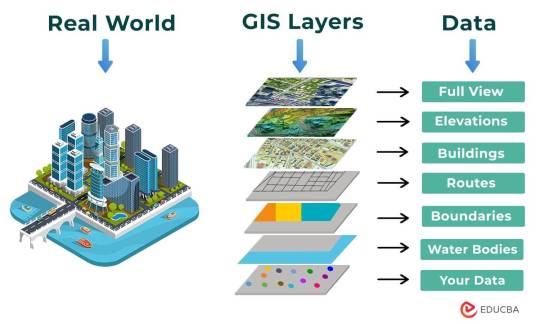
The following points elucidate the notable involvement of GIS in our daily lives:
Navigation and Location Services: GIS provides monitoring functions through the visual display of spatial data and precise geographical positioning of monitored vehicles, whereas GPS provides accurate, clear, and precise information on the position and navigation of a monitored or tracked vehicle in real-time and at the exact location.GIS is at the core of navigation applications and location-based services on smartphones. It enables accurate mapping, real-time navigation, and geolocation services, assisting individuals in finding locations, planning routes, and navigating unfamiliar areas.
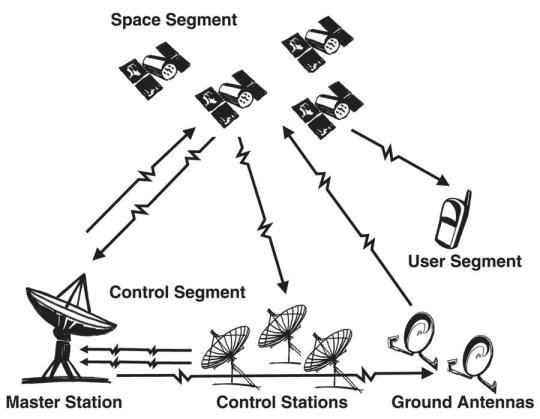
E-Commerce and Delivery Services: GIS software is a powerful tool for supply chain network planning. It helps determine the optimal location for distribution centers, warehouses, or other supply facilities. GIS is utilized in logistics and delivery services for optimizing routes, tracking shipments, and ensuring timely deliveries. E-commerce platforms leverage GIS to enhance the efficiency of their supply chain and last-mile delivery processes.

Weather Forecasting and Disaster Management: Many states are using GIS dashboard to monitor the rainfall across the state, on a real-time basis, from the data shared by rain sensors installed at various locationsGIS plays a crucial role in weather forecasting and disaster management. It assists meteorologists in analyzing spatial data, predicting weather patterns, and facilitating timely responses to natural disasters by mapping affected areas and coordinating emergency services.
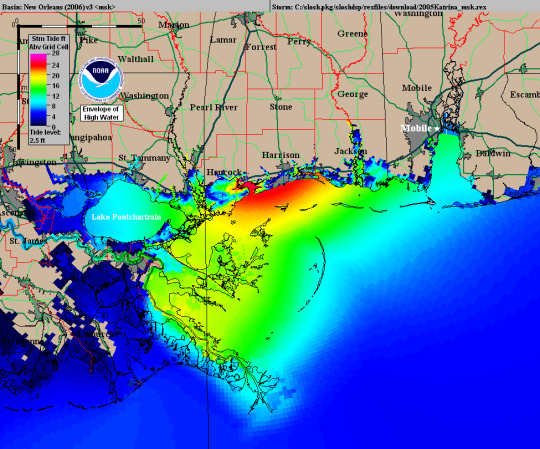
Healthcare Planning and Disease Monitoring: Geographic Information Systems enable the visualization and monitoring of infectious diseases. Additionally GIS records and displays the necessary information that health care needs of the community as well as the available resources and materials. GIS supports public health initiatives by mapping the spread of diseases, analyzing healthcare resource distribution, and assisting in the planning of vaccination campaigns. It aids in identifying high-risk areas and optimizing healthcare service delivery.

Social Media and Geo-tagging: GIS also helps in geotagging and other location related information in posts, it’s tools can map and visualize the spatial distribution of social media activity. This analysis can reveal trends, hotspots, and patterns in user engagement across different geographic areas. Many social media platforms incorporate GIS for geo-tagging, allowing users to share their location and experiences. This feature enhances social connectivity and facilitates the sharing of location-specific information.
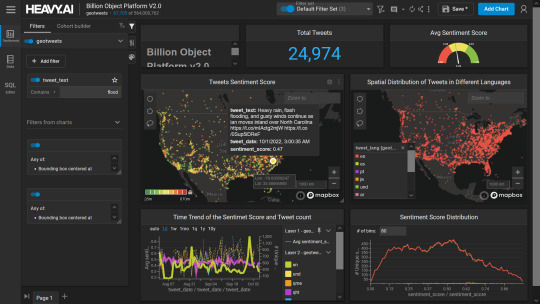
Smart City Initiatives: The Geographic Information System (GIS) offers advanced and user-friendly capabilities for Smart City projects and allows to capture, store and manipulate, analyze and visualize spatially referenced data. It is used for spatial analysis and modeling. It is the cornerstone of smart city planning, enabling the integration of data for efficient urban management. It supports initiatives related to traffic management, waste disposal, energy consumption, and overall infrastructure development.
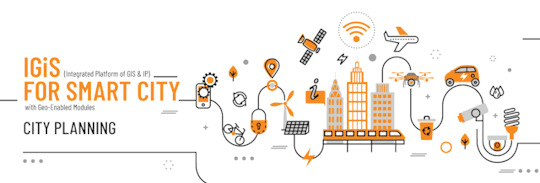
Education and Research: GIS is increasingly utilized in education and research for visualizing and analyzing spatial data. It enables students and researchers to explore geographic relationships, conduct field studies, and enhance their understanding of various subjects.

Agricultural Management and Precision Farming: Farmers leverage GIS to optimize agricultural practices by analyzing soil conditions, crop health, and weather patterns. Precision farming techniques, facilitated by GIS, contribute to increased crop yields and sustainable farming practices.

Real Estate and Property Management: In the real estate sector, GIS aids in property mapping, land valuation, and site selection. It provides real estate professionals with valuable insights into spatial relationships, market trends, and optimal development opportunities.

Tourism and Recreation: GIS enhances the tourism industry by providing interactive maps, route planning, and location-based information. It assists tourists in exploring destinations, finding attractions, and navigating efficiently.

The broad and varied involvement of GIS in our daily lives underscores its significance as a technology that not only facilitates geographic data analysis but also contributes to the efficiency, safety, and interconnectedness of modern society. As GIS applications continue to evolve, their impact on daily activities is expected to further expand and refine.
#gis#architectdesign#architecture#city#education#geographic information system(gis)#geographical indication
12 notes
·
View notes
Text
Transportation Management System
Navigating Efficiency: The Benefits of a Transport Management System (TMS)
In an increasingly globalized and fast-paced world, effective transportation is key to business success. Companies are constantly seeking ways to streamline operations, reduce costs, and improve service quality. Enter the Transport Management System (TMS)—a software solution designed to optimize transportation logistics. We’ll explore what a TMS is, how it benefits businesses, and why investing in a TMS might be one of the smartest moves you make for your supply chain.
What is a Transport Management System?
A Transport Management System (TMS) is a specialized software solution used to plan, execute, and optimize the movement of goods. It provides a comprehensive platform to manage transportation processes, including route planning, carrier management, shipment tracking, and freight payment. By integrating with other supply chain systems, a TMS offers a centralized hub for managing logistics operations and improving overall efficiency.
Key Features of a TMS
Route Optimization:
The features of a TMS are its ability to optimize routes. By analyzing factors such as traffic conditions, weather, and delivery windows, a TMS helps businesses select the most efficient routes, reducing transportation costs and delivery times.
Carrier Management:
A TMS simplifies the process of selecting and managing carriers. It provides access to a database of carriers, allows for rate comparisons, and facilitates carrier negotiations. This feature ensures that businesses can choose the best carriers based on cost, service quality, and performance metrics.
Real-Time Tracking:
With real-time tracking capabilities, a TMS allows businesses to monitor shipments as they move through the supply chain. This visibility helps in proactively addressing any issues that arise, such as delays or disruptions, and provides customers with accurate delivery estimates.
Freight Audit and Payment:
A TMS automates the freight audit and payment process, ensuring that invoices are accurate, and payments are processed efficiently. This helps in identifying discrepancies, reducing billing errors, and managing transportation costs effectively.
Reporting and Analytics:
Advanced reporting and analytics tools within a TMS provide valuable insights into transportation performance. Businesses can analyze key metrics such as delivery times, costs, and carrier performance to make data-driven decisions and improve operational efficiency.
Benefits of Implementing a TMS
Cost Reduction:
A TMS helps businesses reduce transportation costs through route optimization, carrier management, and efficient freight auditing. By streamlining these processes, companies can achieve significant savings on fuel, labor, and other transportation-related expenses.
Improved Efficiency:
By automating routine tasks and providing real-time visibility, a TMS enhances operational efficiency. Businesses can reduce manual paperwork, minimize errors, and speed up the decision-making process, leading to smoother and more efficient logistics operations.
Enhanced Customer Service:
With real-time tracking and accurate delivery estimates, a TMS improves customer satisfaction. Customers can receive timely updates on their shipments, leading to greater transparency and trust in the delivery process.
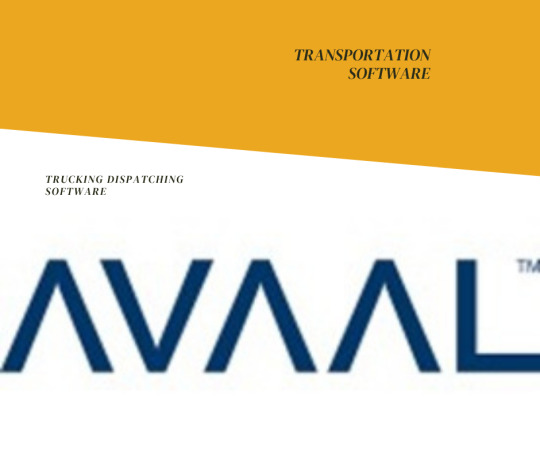
Better Decision-Making:
The data and insights provided by a TMS enable businesses to make informed decisions. Analyzing transportation performance and cost data helps in identifying areas for improvement, optimizing supply chain strategies, and enhancing overall operational performance.
Scalability and Flexibility:
A TMS is designed to scale with your business. Whether you’re expanding operations, adding new transportation modes, or entering new markets, a TMS can adapt to changing needs and support growth.
Choose Right TMS of Your Business
When selecting a TMS, it’s important to consider your specific needs and objectives. Look for a system that aligns with your business size, industry requirements, and budget. Key factors to evaluate include ease of integration with existing systems, user-friendliness, customer support, and the scalability of the solution.
The Future of TMS
As technology continues to evolve, the future of TMS is bright. Innovations such as artificial intelligence, machine learning, and blockchain are set to further enhance the capabilities of TMS. These advancements promise to offer even greater efficiency, accuracy, and security in transportation management.
Conclusion
A Transport Management System (TMS) is a powerful tool that can transform transportation logistics, delivering substantial benefits in terms of cost savings, efficiency, and customer satisfaction. By leveraging the advanced features and capabilities of a TMS, businesses can navigate the complexities of modern supply chains with greater ease and confidence. Investing in a TMS is not just about keeping up with industry trends it's about staying ahead and achieving operational excellence in a competitive market.
2 notes
·
View notes
Text
5 Ways Freight Forwarding Software Can Boost Your Business's Efficiency

In today's fast-paced logistics industry, efficiency is key to success. One tool that can significantly enhance efficiency in your business operations is freight forwarding software. But what exactly is freight forwarding software, and how can it revolutionize your logistics processes? This blog post will explore the five key ways in which freight forwarding software can boost your business's efficiency, from streamlined communication to cost savings.
Streamlined Communication
Centralized Platform for Communication A major benefit of using freight forwarding software is its centralized platform, for all communication regarding shipments. This ensures that everyone involved, from suppliers to carriers and customers stays informed and connected at all times.
Real-Time Tracking and Updates: The real time tracking features of freight forwarding software allow you to keep tabs on your shipments throughout their journey reducing the chances of misunderstandings and delays.
Reduction of Communication Errors and Delays: By automating communication processes freight forwarding software helps minimize errors and prevents delays caused by miscommunication leading to operations.
Automated Processes
Automated Documentation and Paperwork Handling paperwork manually can be time consuming and prone to errors. Freight forwarding software automates tasks like generating bills of lading and invoices making the paperwork process more efficient.
Integration with Customs Regulations and Compliance: Compliance with customs regulations is essential in shipping. Freight forwarding software integrates, with customs databases to ensure your shipments meet all requirements.
Reduction of Manual Data Entry and Human Error: Automating data entry tasks reduces the likelihood of error improving the accuracy and efficiency of your logistics operations.
Improved Planning and Optimization
Route Optimization and Shipment Consolidation: Freight forwarding software offers features like route optimization and shipment consolidation, enabling you to plan the most efficient delivery routes and reduce transportation costs.
Forecasting and Demand Planning Features: To stay ahead of demand, freight forwarding software provides forecasting tools that help you anticipate market trends and plan your logistics operations accordingly.
Capacity Management and Resource Allocation: By optimizing capacity and allocating resources effectively, freight forwarding software ensures that your business operates at its fullest potential, maximizing efficiency.
Enhanced Customer Service
Transparency and Visibility for Clients: With freight forwarding software, you can provide your clients with real-time visibility into their shipments, fostering trust and transparency in your business relationships.
Quicker Response Times to Inquiries: The ability to access up-to-date information on shipments enables you to respond promptly to customer inquiries, enhancing customer satisfaction and loyalty.
Customizable Reporting and Analytics for Client Insights: Freight forwarding software offers customizable reporting and analytics tools that provide valuable insights into your clients' shipping patterns and preferences, allowing you to tailor your services to their needs.
Cost Savings
Reduction in Administrative Costs: By automating administrative tasks, freight forwarding software reduces the need for manual input, saving time and money on administrative work.
Avoidance of Penalties through Compliance Automation: Compliance errors can result in costly penalties. Freight forwarding software helps you avoid these penalties by automating compliance processes and ensuring regulatory adherence.
Optimization of Resources Leading to Lower Operational Costs: Through efficient resource allocation and capacity management, freight forwarding software optimizes your resources, minimizing operational costs and maximizing profitability.
Conclusion
In conclusion, freight forwarding software is a powerful tool that can transform your logistics operations and boost your business's efficiency in numerous ways. From streamlined communication and automated processes to improved planning and optimization, enhanced customer service, and cost savings, investing in freight forwarding software is a wise decision for any business looking to stay ahead in the competitive logistics industry. So why wait? Upgrade your business today and experience the benefits firsthand!
#FreightForwarding#LogisticsTech#SupplyChainSolutions#BusinessGrowth#freight forwarding software#logistics software
2 notes
·
View notes
Text
Streamlining Efficiency and Customer Satisfaction: Call Center Setup and Management Solutions
In today's fast-paced business landscape, establishing an effective call center is crucial for organizations aiming to provide exceptional customer service. A well-designed call center setup, supported by robust management solutions, can significantly enhance operational efficiency, improve customer satisfaction, and boost overall business success. This article delves into the key components of a successful call center setup and explores innovative management solutions that can optimize performance and ensure customer-centric operations.

1. Strategic Planning and Infrastructure:
A successful call center setup begins with meticulous strategic planning. Understanding the organization's objectives, target audience, and service requirements is essential for designing an efficient infrastructure. Considerations such as call volume projections, necessary hardware and software, telephony systems, and network infrastructure must be carefully assessed. Advanced technologies like cloud-based solutions can offer scalability, flexibility, and cost-effectiveness, allowing businesses to adapt to changing demands.
2. Workforce Management:
A well-managed workforce is the backbone of any call center. Efficiently scheduling agents, forecasting call volumes, and accurately estimating staffing needs are crucial for maintaining service levels and minimizing wait times. Workforce management solutions leverage sophisticated algorithms to optimize scheduling, taking into account historical data, employee skills, and service level agreements. These tools enable organizations to strike a balance between customer demand and agent availability, enhancing productivity and reducing costs.
3. Quality Monitoring and Training:
To ensure consistent service quality, call centers must invest in robust quality monitoring and training programs. Implementing call recording and evaluation systems enables supervisors to assess agent performance, identify areas for improvement, and deliver targeted coaching and training. Real-time monitoring tools provide immediate feedback, allowing supervisors to intervene and guide agents during customer interactions. Continuous training programs enhance agent knowledge, soft skills, and product expertise, ultimately leading to enhanced customer satisfaction.
4. Omnichannel Integration:
Modern call centers must embrace omnichannel communication to cater to customers' evolving preferences. Integrating multiple channels, such as voice, email, chat, social media, and self-service portals, enables seamless interactions across platforms. A unified agent desktop interface and intelligent routing systems direct inquiries to the most suitable agents, ensuring consistent service delivery regardless of the channel. Omnichannel integration improves customer convenience, reduces resolution times, and fosters a personalized and consistent customer experience.
5. Analytics and Performance Metrics:
Data-driven insights play a pivotal role in optimizing call center operations. Advanced analytics tools can track key performance metrics, such as average handling time, first call resolution, customer satisfaction scores, and agent productivity. Analyzing this data helps identify operational bottlenecks, gauge customer sentiment, and make informed decisions. Predictive analytics can even anticipate customer needs, allowing agents to proactively address concerns and improve overall service levels.
6. Continuous Improvement and Feedback Loops:
A culture of continuous improvement is vital for the long-term success of any call center. Regularly seeking feedback from customers and agents alike helps identify pain points and areas of improvement. Employee engagement programs, feedback mechanisms, and recognition initiatives create a positive work environment and motivate agents to deliver exceptional service. By fostering a feedback loop, call centers can adapt to changing customer expectations, refine processes, and innovate to stay ahead in a competitive market.
Conclusion:
Setting up and managing a call center involves a multifaceted approach that blends strategic planning, technology implementation, and effective management solutions. By prioritizing infrastructure, workforce management, quality monitoring, omnichannel integration, analytics, and continuous improvement, businesses can establish customer-centric call centers that drive operational efficiency and enhance customer satisfaction. Embracing innovative solutions and staying attuned to evolving industry trends will position organizations for success in an increasingly competitive business landscape.
Click here to check my service on Fiverr
Source:
#CallCenterSetup#CallCenterManagement#CustomerService#ContactCenter#CustomerExperience#Outsourcing#BusinessSolutions#CustomerSupport#ServiceManagement#InboundCallCenter#OutboundCallCenter#VirtualCallCenter#OmnichannelSupport#CRMIntegration#AgentTraining#EfficiencyImprovement#QualityAssurance#PerformanceMetrics#CostOptimization#TechnologyIntegration#WorkforceManagement#Analytics#ProcessImprovement#CustomerSatisfaction#ServiceLevelAgreement
8 notes
·
View notes
Text
Larry Savage Birmingham About Logistics Challenges And How To Overcome Them
Logistics managers are now more aware of the need to obtain vital information instantly due to the pandemic. Additionally, it encouraged warehouse managers to be proactive in mitigating risks related to supply and demand. Today, machine learning software that analyzes real-time data can help prevent both overstock and out-of-stock. This is similar to IoT sensors assisting transportation businesses in tracking goods throughout the route. So, to learn more, read Larry Savage Jr Birmingham – Challenges That Necessitate The Need For An Organized Logistics Industry to level up your business performance.

Strengthen communication at all levels
A vital component of surviving in business is anticipating logistical obstacles and knowing how to overcome them. You should include improving communication with the participants in your global supply chain in your planning. You might even wish to create connections with far-off logistical companies to increase your marketing reach if your company is local. In order to stay informed about the state of the resources supporting your products and market, it's critical to keep in constant contact with your suppliers.
Establish standards for suppliers and partners
If businesses follow different standards, it could confuse some of them when arranging many deliveries daily with several supply chain managers. Logistics operations are considerably more streamlined and coherent when every service follows the same loading and unloading procedures. Supply chain visibility can also be maximized for all participants in this coordination through smart technology and interconnected electronic networks.
Invest in the right technology
Companies today are also overspending on the latest software and hardware developments due to the quick changes in business technology. Spending less on technology to achieve maximum efficiency is now possible if you use cloud technologies.
If your business is operating on a tight budget, cloud services offer the most economical options. A warehouse might think about collaborating with logistics industry specialists if it needs additional flexibility, scalability, or experience.
Using third-party logistics providers to carry goods to markets is one way for businesses that can't afford to invest in creating a logistics service that makes use of automation, robots, and artificial intelligence.
Reduce warehouse management errors
An infrastructure's likelihood of errors decreases as it becomes more digital through automation or improved access to pertinent real-time data.
Adopting warehouse management software with integrations to new and innovative technologies like 5G, AI, and IoT has become crucial in this century. You can use these technologies to gather and archive important logistics data.
Proper placement of warehouse inventory products is also crucial to avoid a cascade of disruptions.
Then, to prepare items for delivery, they must be carefully chosen and packed. Incomplete orders and incorrect delivery information are two common order fulfillment mistakes that still happen. Warehouse managers can effectively decrease these errors by using more vigilant supervision and enhanced picking and packing confirmation protocols.
Final thoughts
In the future, meeting customer needs will be the hardest task for the logistics industry. So, improving warehouse structure and layout by analyzing logistics will help you. Lastly, don’t read Larry Savage Birmingham — Know About The Basics Of Stock Options Trading to keep your fortunes thriving.
#Larry Savage Birmingham#Logistics Challenges#Logistics Expert#Logistics Industry#business owner#business ideas#business strategy
3 notes
·
View notes